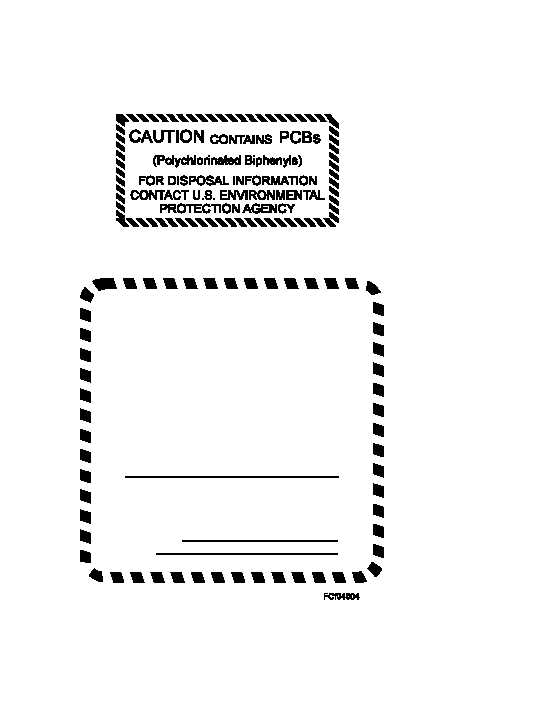(an adverse effect to your entire bodily system) can
result from severe overexposure. It is indicated by
nausea, vomiting, weight loss, jaundice, and
abdominal pain. It can be fatal.
To protect personnel, use the label shown in figure
4-4 to mark all equipment and cabinets containing
in-service small and large PCB capacitors. You can
find additional information on PCBs in the Shipboard
Management Guide for Polychlorinated Biphenyls
(PCBs), NAVSEA S9593-A1-MAN-010. We highly
recommended that you study this publication.
BATTERIES
A battery is a group of cells that provide
direct-current (dc) electrical power. Batteries are used
in automobiles, boats, aircraft, ships, submarines,
lighting equipment, and portable and stationary
electrical and electronic equipment. They can be used
as main power sources or as secondary or backup
power sources. Some batteries are rechargeable.
Batteries can be dangerous. If used or handled
improperly, they can explode, release toxic gases, or
leak hazardous chemicals.
The following section will give you the safety
precautions for some of the more common types, such
as carbon-zinc dry cell batteries, manganese-dioxide
alkaline-zinc cell batteries, lithium cell batteries, and
nickel-cadmium cell batteries.
Carbon-Zinc Dry Cell Battery
The carbon-zinc dry cell battery is a very common
battery in the Navy. It has a zinc outer container, a
carbon center electrode, and a chemical paste for the
electrolyte. It is usually sealed in a cardboard or plastic
casing.
When you use, store, or dispose of carbon-zinc
batteries, always observe the following safety
precautions:
NEVER store carbon-zinc batteries in electronic
equipment for extended periods. The corrosive
electrolyte could leak out of the battery and
damage the equipment.
NEVER throw carbon-zinc batteries into a fire or
an incinerator. They could explode.
NEVER throw carbon-zinc batteries overboard
while at sea; they contain metal pollutants. Store
them on board (in a plastic-lined metal
container) until you can properly dispose of
them ashore. See the Environmental and Natural
Resources Program Manual, OPNAVINST
5090.1 (Series) Appendix L.
Manganese-Dioxide Alkaline-Zinc Cell Battery
Commonly called an
alkaline battery, the
manganese-dioxide alkaline-zinc cell battery is similar
to the carbon-zinc battery. The only difference is the
type of electrolyte used. These batteries are used in
portable electronic equipment. The safety precautions
for alkaline batteries are identical to those for
carbon-zinc batteries.
Lithium Cell Battery
The lithium cell battery is a high-energy, long
lasting battery with a longer shelf life than most other
batteries. It is often used in electronic equipment, such
as computers, communications and cryptographic
equipment, torpedoes, and missiles. Unfortunately,
lithium batteries can be very dangerous. They can
4-6
CAUTION
PCBs
CONTAINS
(Polychlorinated Biphenyls)
A toxic environmental containment requiring
special handling and disposal in accordance with
U.S. Environmental Protection Agency Regulations
40 CFR 761-For Disposal Information contact
the nearest U.S. E.P.A. Office.
In case of accident or spill, call toll free the U.S.
Coast Guard National Response Center:
800:424-8802
Also Contact:
Tel. No.:
Figure 4-4.—EPA-require labels for PCB hazards.


